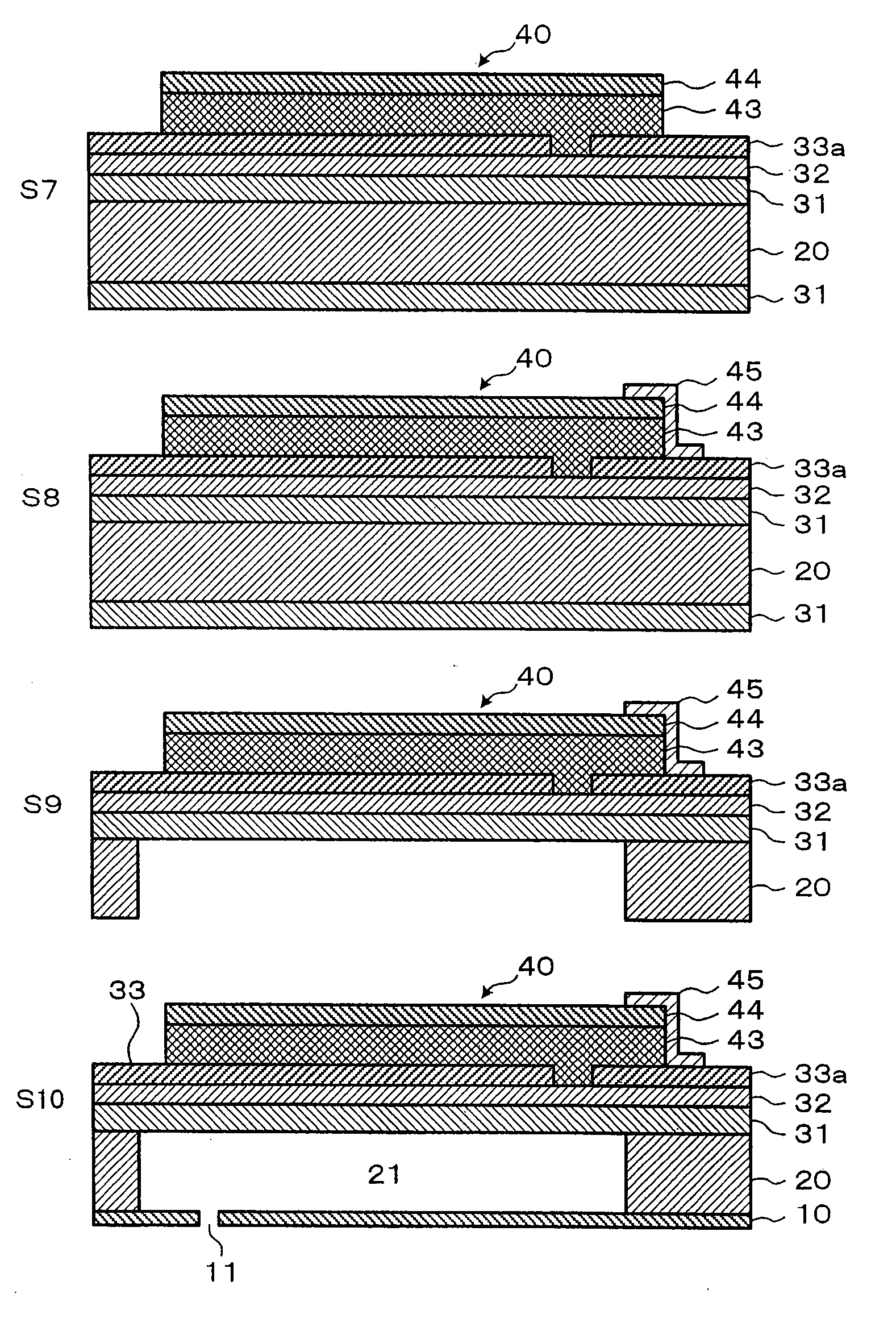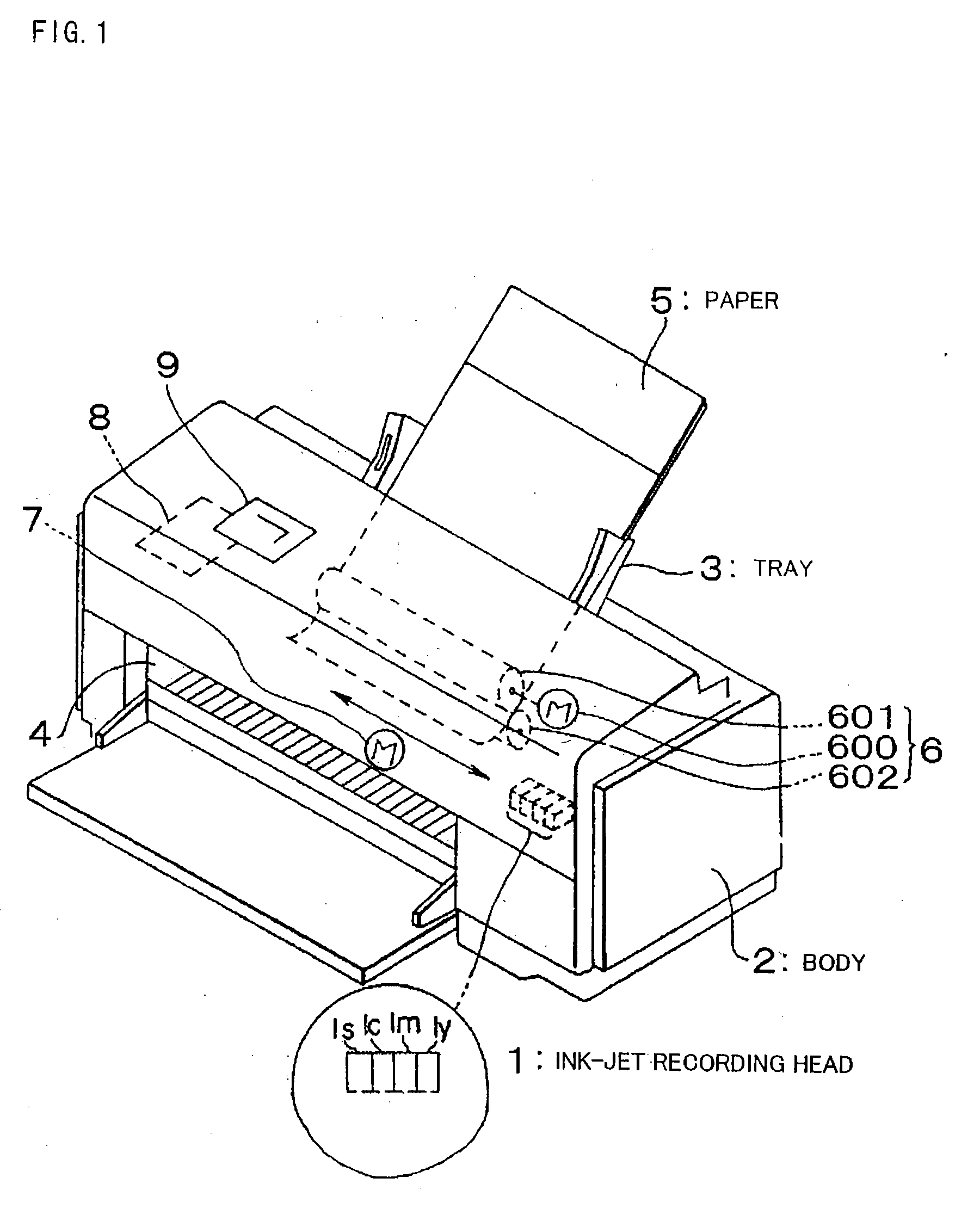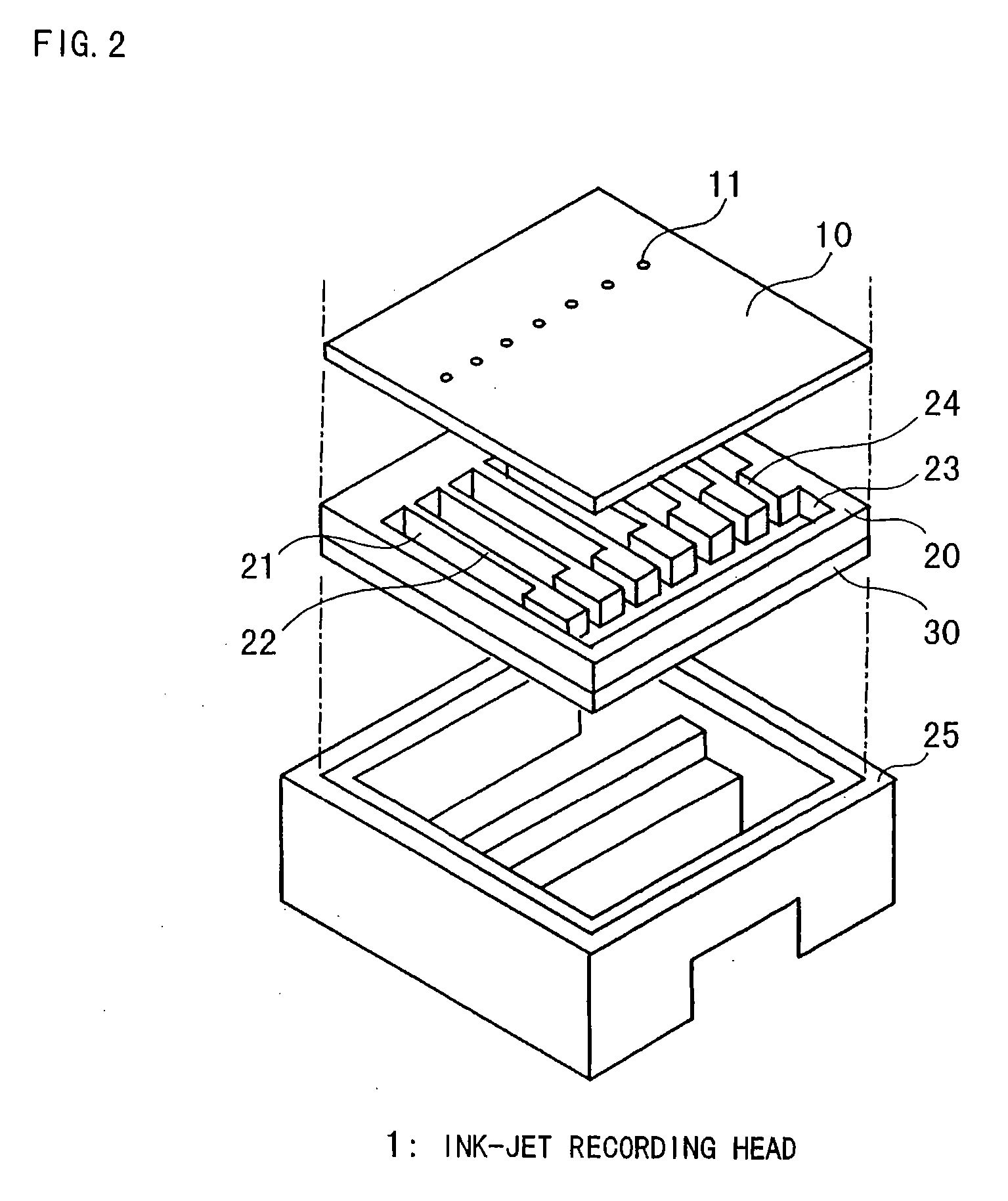A Method for the Manufacture of a Piezoelectric Element
a piezoelectric element and manufacturing method technology, applied in the direction of variable capacitors, generators/motors, conductive pattern formation, etc., can solve the problems of poor piezoelectric characteristics, insufficient printing performance of ink-jet recording heads or printers, and difficult to obtain piezoelectric films with prescribed orientation degrees with etc., to achieve stable and good piezoelectric characteristics, good stability and reproducibility, excellent characteristics
- Summary
- Abstract
- Description
- Claims
- Application Information
AI Technical Summary
Benefits of technology
Problems solved by technology
Method used
Image
Examples
first embodiment
Manufacturing Method of the First Embodiment
[0060] A method for the manufacture of the piezoelectric element in accordance with the present invention will be described below. FIGS. 5 and 6 are cross-sectional schematic views illustrating a method for the manufacture of the piezoelectric element and the ink-jet recording head of the first embodiment.
Step of Forming a Diaphragm (S1)
[0061] An insulating film 31 is formed on a silicon substrate 20. The thickness of the silicon substrate 20 is, for example, about 200 μm. In the manufacture of the insulating film, a high-temperature treatment is conducted in an oxidizing atmosphere composed of oxygen or steam and a film of silicon dioxide (SiO2) with a thickness of about 1 μm is formed. Besides the usually used thermal oxidation method, a CVD method can be used in this step.
[0062] Then, a ZrO2 film 32 with a thickness of about 400 nm is formed on the insulating film 31. The ZrO2 film 32 is obtained by growing a Zr layer by sputtering ...
second embodiment
Manufacturing Method of the Second Embodiment
[0084]FIG. 11 is a cross-sectional schematic view illustrating a method for the manufacture of the piezoelectric element and the ink-jet recording head of the second embodiment. This figure shows the part of the process corresponding to FIG. 5 of the first embodiment. In the process of the second embodiment, the steps other than the steps S3 through S5 of the first embodiment are the same as in the first embodiment and the explanation thereof is omitted.
Step of Forming a First Ti Layer (S3)
[0085] After the bottom electrode 33 of Ir and Pt is formed in the same manner as in S2 of the first embodiment, a step of forming a first Ti layer in which a Ti layer (nucleus) is formed on the bottom electrode 33 is immediately implemented. For example, a Ti layer is formed to a thickness of no less than 2 m and no more than 18 nm by a sputtering method or the like. The first Ti layer is formed uniformly on the bottom electrode 33, but it may also ...
PUM
| Property | Measurement | Unit |
|---|---|---|
| thickness | aaaaa | aaaaa |
| thickness | aaaaa | aaaaa |
| thickness | aaaaa | aaaaa |
Abstract
Description
Claims
Application Information
 Login to View More
Login to View More - R&D
- Intellectual Property
- Life Sciences
- Materials
- Tech Scout
- Unparalleled Data Quality
- Higher Quality Content
- 60% Fewer Hallucinations
Browse by: Latest US Patents, China's latest patents, Technical Efficacy Thesaurus, Application Domain, Technology Topic, Popular Technical Reports.
© 2025 PatSnap. All rights reserved.Legal|Privacy policy|Modern Slavery Act Transparency Statement|Sitemap|About US| Contact US: help@patsnap.com



